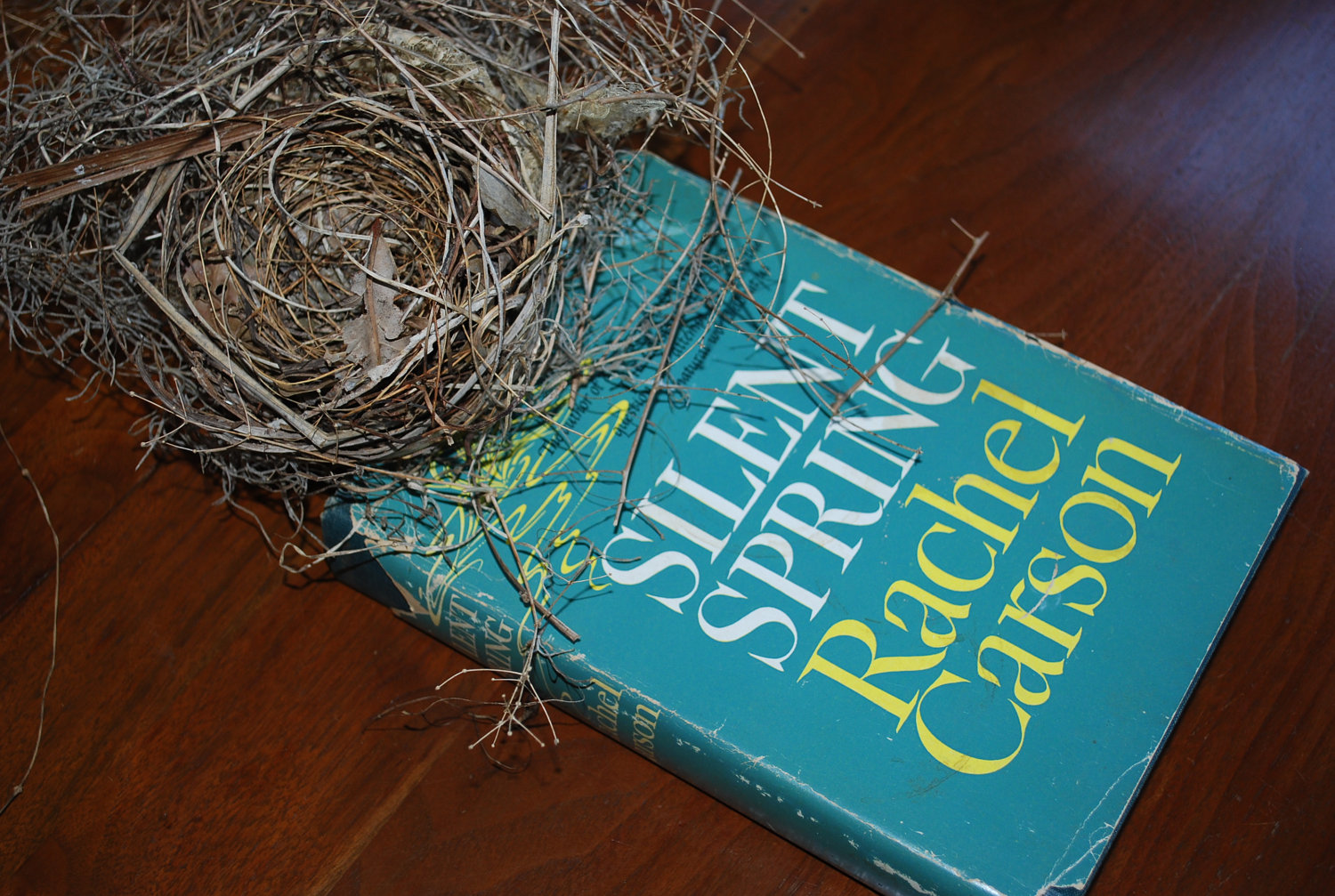Silent Spring by Rachel Carson
 Swadhin Roy Sunny
Swadhin Roy Sunny
Silent Spring, published in 1962, offered the spur to the present environmentalism. It almost painstakingly documents the consequences of pesticides, notably for the birds’ family. Besides ensuring the tactics of the government and agricultural scientists, it recommends a change in attitudes towards nature and how individuals interact with it.
In Silent Spring, there is a wrenching fable of a society in which life appears to be gone with terrifying silence, which potentially has no ending, and Carson begins with that for the book Silent Spring. Here, she wanted to caution the world against the frivolous use of people and careless application of chemical pesticides and their terrible consequences. It came as easily as though the plot and case were science fiction by the many events and scientific discoveries that the author picked from real life and used in this docudrama. Thanks to Carson’s moving imagery and narrative style, the audience was able to feel the consequences of the hand of man, which was a force that brought the world down in its individuality.
When Carson begins the actual argument of the book, she introduces the notion of pesticides, which she calls biocides because they mean the extermination of not just the target pests but all forms of life. She looks at the development of pesticides, going to the creation of man-made substances like DDT during the Second World War and then gradually changing the formula for civil use in farming and mosquito control. These compounds that came onto the market and were called wonders of modern science were used in large amounts without any regard for their potential effects on the environment.
Speaking about the negative effects of these substances, Carson explains in a very elaborate way the biological processes through which the substances exert the toxic effects. She further explains that, contrary to what an average person may think, these compounds do not disappear from the environment once they are there. Instead, polychlorinated biphenyls raise the trophic cascade by concentrating in the flesh of organisms, a procedure known as biomagnification. This process affected the predatory birds, including the eagles and falcons, in a very big way, and the numbers in these groups started to decline largely. She brings out the plight of some species that have been classified as endangered species, including the bald eagle, through weakened eggshells due to exposure to DDT.
Carson speaks on how pesticides can harm ecosystems by eradicating other useful insects, plants, and animals that form the base of the food chain in enhancement to the target pests. This is beside the fact that there is direct poisoning that happens. For instance, she recounts the effect that came with the use of DDT to kill mosquitoes in this manner and also killed other life in rivers and streams as well as affected bees, which play an important role in pollination, hence creating an unexpected chain reaction. As pointed out by Carson, these disturbances weaken the ecosystems more and make them more vulnerable to further damage.
He is particularly scathing about the chemical industry, which he accuses of reporting one thing while hiding the other and generally underplaying the risks of using pesticides. Her argument so much that these business establishments had a role to play in promoting the widespread utility of their products, often at the detriment of the environment and public health. She also accuses government organizations of complicity for not promulgating adequate regulations that ought to have governed the use of pesticides and for often siding with businesses at the expense of common citizens and their environment.
Carson continues to provide an example of various case studies and uses them to make her arguments as she writes Silent Spring. One evident outcome of the extensive spraying program by Dr. Thomas A. Llpelow in Clear Lake, California, to get rid of gnats through the use of DDD — a relative of DDT is one example. This program seemed to work for a few years before it led to the near decimation of a specific type of waterbird that is commonly known as the western grebes. Grebes’ death was due to the toxicity of the chemicals found in the fish that they ate. These and other stories were used by Carson to support its thesis that hazardous pesticides are being used irresponsibly and are causing significant, often detrimental impacts.
Also, he raises the key concept that masks the entire book — the symbiosis of all existing life forms. She also argues that since we are part of this ecosystem, we are also affected in one way or another by these substances. By providing some references, she argues that excessive use of pesticides can cause calamity for generations to come through the association of these chemicals with cancer and other diseases in human beings.
In the subsequent chapters, Carson discusses different approaches to pest control and provides her reasons that entomological and pest control methods can and should be more sustainable and rational. She offers a concept called integrated pest management (IPM), which focuses on the utilization of biological factors like predators and parasites to handle or eradicate pests rather than relying on chemical substances. Carson believes that it is possible to exterminate pests and not kill the ecosystem in the process by working with nature, not against it.
The last several chapters of Silent Spring maintain a more philosophical tone, as Carson reflects on the need people have to start thinking twice before messing up with nature. She invites readers to make a change by adopting a more sustainable and less violent lifestyle considered by modern society as being progressive to change the notion of development that implies the subjugation of the physical world. If life was to be terminated, she maintained that true development should be one that made life better rather than shorten it.
Public awareness and policy were immediately and significantly impacted by Carson’s work. The best-selling book Silent Spring generated a great deal of discussion over the usage of pesticides and the necessity of environmental protection. It prompted the creation of the Environmental Protection Agency (EPA) in 1970 and resulted in a national ban on DDT and other dangerous pesticides in the US. In addition, the book catalyzed the environmental movement, resulting in the founding of Earth Day in 1970 and the passing of numerous significant environmental laws.
In the end, Carson’s work was validated by science and the chemical industry, despite initial opposition. She was right when she warned of the risks associated with uncontrolled chemical usage, and her plea for a more deliberate and sustainable approach to environmental management holds even now, as it did in the 1960s.
More than just a scientific study, Silent Spring is a potent call to action that continues to motivate activists, decision-makers, and people everywhere. The legacy of Rachel Carson serves as a poignant reminder of the ability of a single voice to impact global change and the critical need to preserve the delicate ecosystem that supports all life.
Subscribe to my newsletter
Read articles from Swadhin Roy Sunny directly inside your inbox. Subscribe to the newsletter, and don't miss out.
Written by

Swadhin Roy Sunny
Swadhin Roy Sunny
I am Swadhin Roy Sunny, a highly motivated STEM enthusiast, mental health advocate, and young researcher. As an international award-winning student, I am dedicated to making a positive impact through science and technology. I founded Monobadh, a non-profit organization focused on mental health awareness, and I am also a content creator on YouTube, sharing my passion for learning and discovery. As a young entrepreneur, I am committed to fostering innovation and growth. I enjoy writing about travel, life philosophy, and physics, and I am always eager to connect with like-minded individuals and professionals.